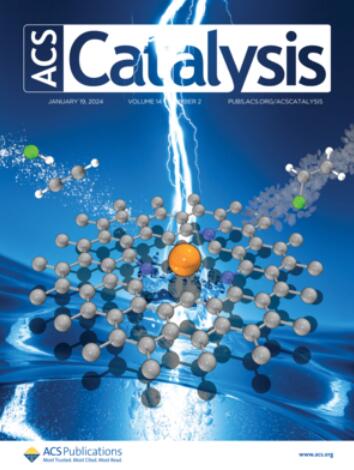5-羟甲基糠醛氧化精炼电催化剂设计:洞察电氧化机制,结构-性能相关性和优化策略
IF 11.3
1区 化学
Q1 CHEMISTRY, PHYSICAL
引用次数: 0
摘要
电氧化生物质衍生的5-羟甲基糠醛(HMF)是一种绿色且经济可行的生产有价值的化学品2,5-呋喃二羧酸(FDCA)的方法。鉴于这一转变的重要性,迫切需要高效的电催化剂来加速HMF的电氧化。本文全面综述了将HMF转化为FDCA的催化剂的电氧化机理、结构-性能相关性和优化策略。首先,讨论了反应途径的选择性、电氧化机制、控制HMF氧化的热力学和动力学原理,以及阻碍竞争性析氧反应的策略。随后,详细介绍了贵金属和过渡金属电催化剂的结构-性能相关性,强调了各种金属元素对HMF氧化过程的促进作用。此外,还深入分析了电催化剂的性能优化策略,包括定制表面吸附、调节脱氢、加速质子转移、整合催化位点和再生活性物质。此外,我们批判性地评估了目前在开发高效HMF电氧化催化剂方面面临的挑战,并提出了克服这些障碍的未来方向。本文旨在为开发高效电催化剂加快生物质转化应用提供有益的启示。本文章由计算机程序翻译,如有差异,请以英文原文为准。

Refining Electrocatalyst Design for 5-Hydroxymethylfurfural Oxidation: Insights into Electrooxidation Mechanisms, Structure–Property Correlations, and Optimization Strategies
Electrooxidation of biomass-derived 5-hydroxymethylfurfural (HMF) is a green and economically viable approach to produce the valuable chemical 2,5-furandicarboxylic acid (FDCA). Given the significance of this transformation, there is a pressing demand for efficient electrocatalysts to expedite the HMF electrooxidation. This article provides a comprehensive overview of the electrooxidation mechanisms, structure–property correlations, and optimization strategies for catalysts involved in converting HMF into FDCA. Initially, the selectivity of reaction pathways, electrooxidation mechanisms, and thermodynamic and kinetic principles governing HMF oxidation are discussed, along with strategies to hinder the competitive oxygen evolution reaction. Subsequently, the structure–property correlations of electrocatalysts based on precious metals and transition metals are introduced in detail, emphasizing the promotion effects of various metal elements on the HMF oxidation process. Furthermore, an in-depth analysis of performance optimization strategies for electrocatalysts is also conducted, including tailoring surface adsorption, regulating dehydrogenation, accelerating proton transfer, integrating catalytic sites, and regenerating active species. Additionally, we critically assess the current challenges faced in developing highly effective HMF electrooxidation catalysts and propose future directions for overcoming these obstacles. This review article aims to provide insightful inspiration for developing high-efficiency electrocatalysts to expedite biomass conversion applications.
求助全文
通过发布文献求助,成功后即可免费获取论文全文。
去求助
来源期刊

ACS Catalysis
CHEMISTRY, PHYSICAL-
CiteScore
20.80
自引率
6.20%
发文量
1253
审稿时长
1.5 months
期刊介绍:
ACS Catalysis is an esteemed journal that publishes original research in the fields of heterogeneous catalysis, molecular catalysis, and biocatalysis. It offers broad coverage across diverse areas such as life sciences, organometallics and synthesis, photochemistry and electrochemistry, drug discovery and synthesis, materials science, environmental protection, polymer discovery and synthesis, and energy and fuels.
The scope of the journal is to showcase innovative work in various aspects of catalysis. This includes new reactions and novel synthetic approaches utilizing known catalysts, the discovery or modification of new catalysts, elucidation of catalytic mechanisms through cutting-edge investigations, practical enhancements of existing processes, as well as conceptual advances in the field. Contributions to ACS Catalysis can encompass both experimental and theoretical research focused on catalytic molecules, macromolecules, and materials that exhibit catalytic turnover.
 求助内容:
求助内容: 应助结果提醒方式:
应助结果提醒方式:


